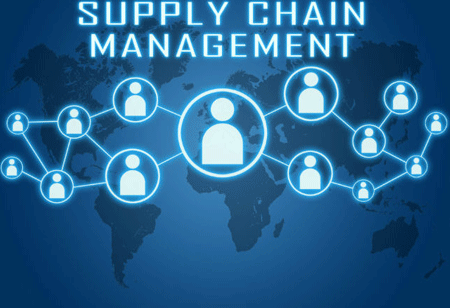THANK YOU FOR SUBSCRIBING
Be first to read the latest tech news, Industry Leader's Insights, and CIO interviews of medium and large enterprises exclusively from Food and Beverage Tech Review
Introduction to Supply Chain Management Challenges And Solutions
Enterprises across the globe have supply chains as an integral part of their business models.

By
Food and Beverages Tech Review | Thursday, February 14, 2019
Stay ahead of the industry with exclusive feature stories on the top companies, expert insights and the latest news delivered straight to your inbox. Subscribe today.
Enterprises across the globe have supply chains as an integral part of their business models. Businesses with large supply chains need to invest heftily for managing their supply chain as its consist of n number of entities which need to operate simultaneously for achieving high operational efficiency and productivity. A supply chain is a cluster of partners that work in tandem from manufacturing to delivery of the goods. It consists of companies from small to large such as OEMs, logistics partner, component suppliers, distributors, and retailers whose combined efforts result in the delivery of products.
Entailment of several entities brings in multiple obstacles to overcome for maintaining a smooth operational workflow. The most prominent ones are discussed below.
• Quality: The most critical component of the network as manufacturers of each vertical need to maintain high standards of goods quality for customer satisfaction. It can also be termed as the foundation of the supply chain as the whole depends entirely on product quality.
Few Supply Chain Management Companies (Block Array, Entercoms, J.B. Hunt Transport)
• Regulation Compliance: No matter how efficient and agile is the supply chain, if it fails to comply with regulations forged by authorities, all efforts go waste. Supply chain management solution providers struggle hard to keep up with regulations in the least cost investment.
• Variability: Customer preferences vary on the basis of demographics, locations, time period, and several other factors. Businesses strive to comprehend the same and meet for maintaining customer journeys for a more extended period. It is hard to understand the same but not impossible, especially after the dawn of the technological revolution.
• Validation: Organizations currently struggle to prove the authenticity of goods, especially in the healthcare and food sectors. Validating the provenance of products with complete transparency remains a challenge to overcome in the supply chain.
For an effective supply chain management enterprises will have to heed on following key areas which directly influence the operational efficiency.
• Analyze market demands to fulfill
• Sales and Operational planning
• Relationship management with other entities
• Procurement software for inventory management
• Efficient logistics for timely and managed delivery of goods
• Supply chain visibility for managing the overall
Considering the above, organizations will require embracing new technical solutions for various stages that help in injecting agility to the supply chain.
I agree We use cookies on this website to enhance your user experience. By clicking any link on this page you are giving your consent for us to set cookies. More info







